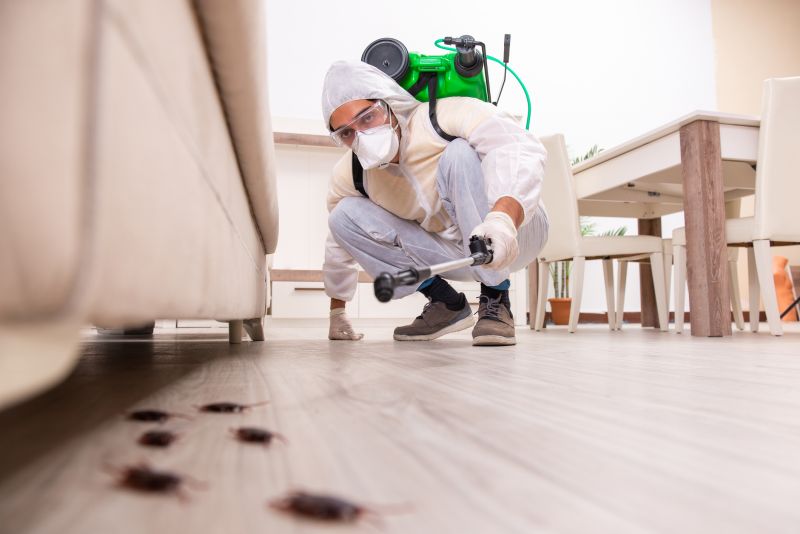Expert Picks For Ash Borers Pest Control Products That Work
Explore proven products favored by professionals for controlling ash borer pests and safeguarding your landscape.
 Ash borers are a common pest that can cause significant damage to ash trees, leading to weakened structures and eventual decline if not managed properly. Effective pest control for ash borers often involves a combination of preventive measures and targeted treatments. Various products are available to help manage these pests, ranging from systemic insecticides to protective barriers and traps. Proper identification of the pest and understanding the severity of the infestation are crucial steps before selecting the appropriate control method.
Ash borers are a common pest that can cause significant damage to ash trees, leading to weakened structures and eventual decline if not managed properly. Effective pest control for ash borers often involves a combination of preventive measures and targeted treatments. Various products are available to help manage these pests, ranging from systemic insecticides to protective barriers and traps. Proper identification of the pest and understanding the severity of the infestation are crucial steps before selecting the appropriate control method.
Top Overall Option
Systemic Insecticide for Tree Treatment
A systemic insecticide designed for tree injection or soil drenching offers a comprehensive approach to pest control by delivering active ingredients directly to the tree's vascular system. This method ensures that the pest's feeding activity is disrupted, reducing damage from ash borers. It is suitable for use on mature trees and can provide extended protection when applied correctly. Proper application and timing are essential for effectiveness, and safety precautions should be followed to protect applicators and non-target organisms.
Types of Products For Ash Borers Pest Controls
Tree Injection Systems
Devices designed for injecting insecticide directly into the tree's trunk to target pests effectively.
Soil Drench Solutions
Liquid formulations applied to the soil around the tree base to be absorbed systemically.
Bark Banding and Traps
Physical barriers and traps placed around the trunk to prevent beetle access or capture adults.
Aerosol and Spray Insecticides
Quick-acting sprays for spot treatments on affected areas or for use during adult beetle activity.
Preventive Tree Wraps
Protective wraps that physically block beetle entry and egg-laying on the trunk.
Pheromone Traps
Lure-based traps that attract and capture adult ash borers to monitor or reduce populations.
Biological Control Agents
Natural predators or parasitic insects that help control ash borer populations.
Wood Preservers and Sealants
Products applied to exposed wood to prevent beetle infestation.
Insecticidal Paints
Paint formulations containing insecticide for direct application on the trunk.
Fumigation Products
Specialized gases or vapors used in confined spaces or wood treatments.
Popular Choices
Easy-to-use kits for injecting insecticide directly into the tree to target ash borers.
Liquid concentrates for soil application that are absorbed systemically.
Physical barriers combined with trapping features to monitor or reduce beetle activity.
Portable sprays for spot treatments during peak beetle activity.
Attractant-based lures used in conjunction with traps to monitor pest presence.
Wrapping materials that provide a physical barrier against adult beetles.
Packages containing natural predators or parasitic wasps for integrated pest management.
Products designed to seal entry points and prevent infestations.
Paints with insecticide for direct trunk application.
Tools and products for targeted fumigation of infested wood or areas.
In addition to chemical treatments, physical barriers such as trunk wraps or banding can sometimes deter adult beetles from laying eggs. Regular monitoring and early intervention are essential to prevent widespread damage. When choosing products, factors such as application method, safety considerations, and the specific stage of pest development should influence your decision. Consulting with arborists or pest control specialists can provide tailored advice that aligns with your tree care goals.
While chemical controls are often effective, they should be used responsibly to minimize unintended effects. Always follow label instructions carefully, and consider timing treatments to coincide with the beetles' life cycle for optimal results. Combining multiple strategies, including pruning affected areas and maintaining tree health, can also contribute to a comprehensive pest management plan. Staying informed about the latest product options and application techniques will help ensure your ash trees remain healthy and resilient.
Key Buying Considerations
- Application method suitability for your specific tree size and location
- Safety precautions and handling instructions for chemical products
- Timing of application relative to beetle life cycle stages
- Coverage area and dosage requirements to ensure effective treatment
- Compatibility with other tree care practices and treatments
- Longevity of protection offered by the product
- Potential impact on non-target organisms or nearby plants
- Ease of use and whether professional application is recommended
- Product shelf life and storage requirements
- Label instructions and legal compliance for use in your region
- Cost-effectiveness relative to the size of the infestation
- Availability of technical support or guidance from manufacturers
- Environmental safety considerations, even if eco-friendly topics are excluded
- Product reviews and user feedback for real-world insights
